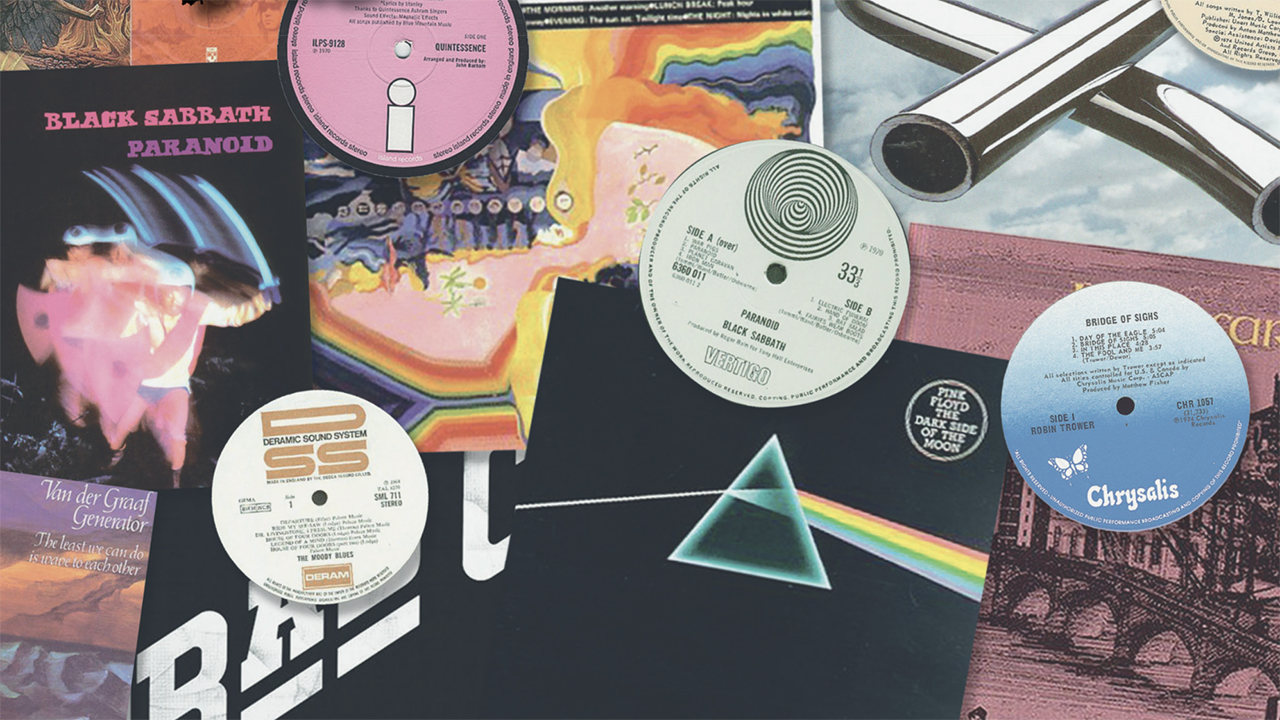Before the Beatles came along and ruined it, the record companied had the British market nicely sewn up.
The four major companies – EMI, Decca, Pye and Philips – would choose their artists from established managers. The managers had already groomed the artists, remodelling them with new names such as Marty Wilde, Billy Fury or Cliff Richard. The record company would then select songs for them to record, ready-to-wear numbers from London’s Tin Pan Alley songwriters or maybe tried and tested American hits that hadn’t been released in the UK.
Marketing and promoting singles was pretty straightforward. National newspapers weren’t interested in pop music. That left the three weekly pop newspapers: Melody Maker, Record Mirror and the NME. Radio promotion was limited to the BBC Light Programme – which had a remit to entertain everyone between the ages of seven and 70 – and Radio Luxembourg, which crackled across the English Channel for every evening.
Then along came the Beatles who, in the immortal words of Dennis Waterman (via Little Britain), “wrote the theme tune, sang the theme tune”. Artists that wrote and sang their own material not only disturbed the record companies’ cosy working practices, they also revealed a huge demand that they hadn’t been aware of.
For a while the companies maintained control. The new-fangled beat groups still wore suits and were respectful, only coming into the studio control room unless they were invited.
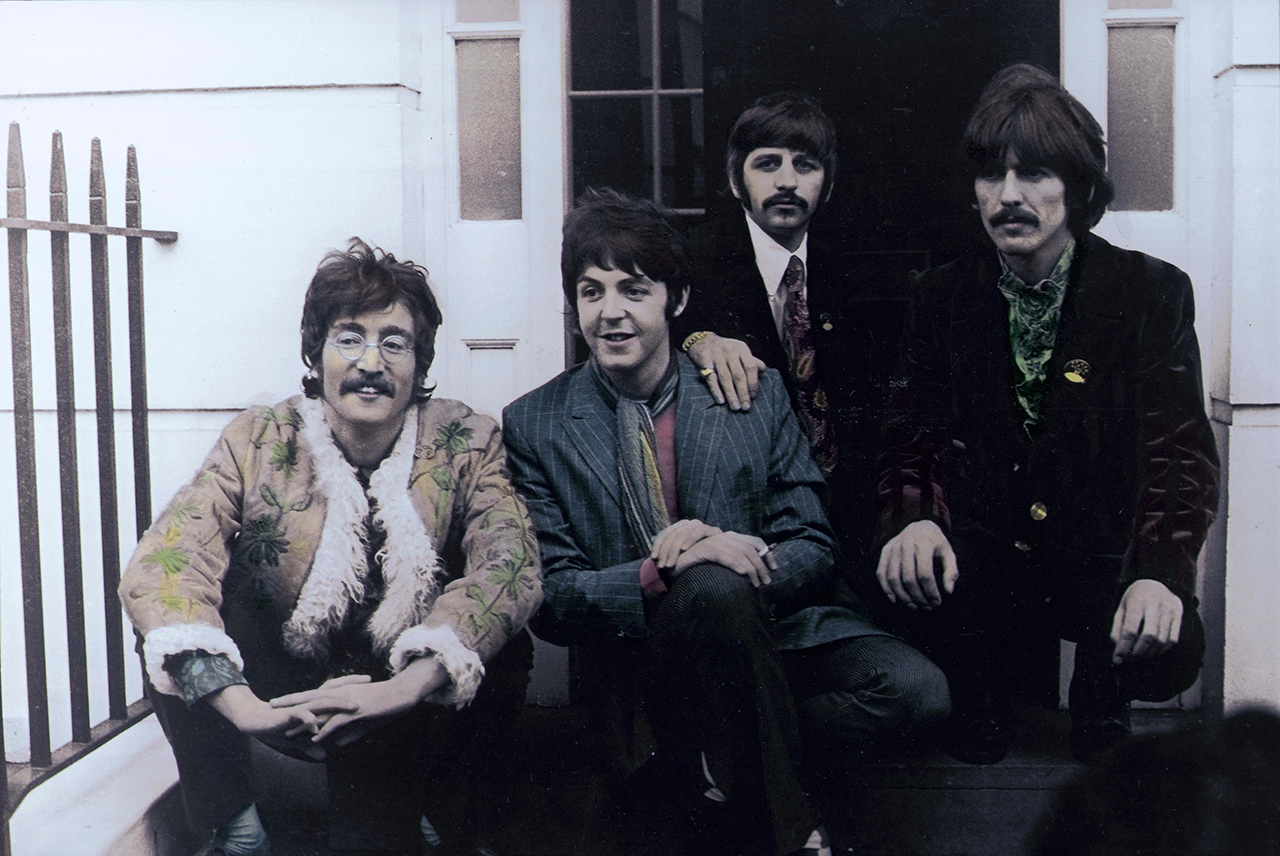
But under the surface things were changing. The Rolling Stones began recording in America where they could create and control the sound they wanted. When Eric Clapton turned up to record the Bluesbreakers album with John Mayall he turned his amp right up to get the feedback tone he wanted, to the horror of the lab-coated studio technicians.
But after the Beatles’ Sgt Pepper album the market exploded in all directions. Suddenly there were hundreds of bands playing all kinds of music, and a whole new generation eager to listen. What’s more, the bands wanted to make albums rather than singles. The record company executives didn’t have a clue. The only young people they knew were working in the post room.
But outside the record companies a new breed of entrepreneur was emerging to exploit this musical revolution: managers, promoters, booking agents, publicists. They were watching the fast-moving trends closely and, more importantly, they knew and understood the new music in a way that most record company people didn’t. They realised that instead of simply giving the artist to the record company they could record the artist themselves and then licence the result to a record company for manufacture and distribution. You could even form your own record company and have your own label.
Towards the end of the 60s a whole new batch of record labels sprang up, some formed independently and others by the record companies themselves who realised that they needed to market this new music under a separate identity away, from their existing labels. They were staffed by young, enthusiastic people who had a different rapport with the artists: they treated them as human beings rather than contracted serfs; they encouraged the artists to create rather than controlling them; they also understood that a new act might take three or four albums to develop.
In the 70s these labels became a vital part of the rapidly expanding rock music scene and gained their own identities from the music they released. There was a period when, if you bought an album released by Harvest, Vertigo or United Artists you had a general idea of the kind of music you were getting, even if the name of the band was unfamiliar.
Album sleeves had an important part to play in marketing the music – the artwork, typography, gatefold sleeves, even the design of the record label itself. If that expense – when allied to the recording costs – was large, the potential rewards were huge. The profit from one million-selling album could pay for a dozen new acts. The trick was to release as many albums as you could afford and as soon as one started taking off, move in and maximise the potential.

Island Records
The first independent label to make a serious impact was Island Records, which was started back in 1959 by Chris Blackwell, whose family were part of the well-known food brand Crosse & Blackwell. With money no object and growing up in Jamaica, he became addicted to the local ska music and formed Island as a means of getting the music distributed around the country. In 1962 he set up his label in the UK to bring the music to the West Indian population who’d migrated to south London, and two years later had a No.2 hit with My Boy Lollipop by Jamaican teenager Millie. He’d licensed the record to the Philips label Fontana and he did the same with the Spencer Davis Group when he started managing them, scoring two No. 1 hits with Keep On Running and Somebody Help Me.
By 1967 he was ready to launch Island as a stand-alone label, signing and releasing albums by John Martyn and Traffic followed by Free, King Crimson and Mott The Hoople. He also made deals with up and coming management and production companies that brought with them Jethro Tull, Fairport Convention and Nick Drake.
All these acts were new, unproven and musically diverse, but they would all become hugely successful (in Drake’s case sadly, posthumously) and signalled the label’s broad scope. Not only did they subsidise the less commercial signings – Wynder K Frogg, Dr Strangely Strange, White Noise and Heavy Jelly (purveyors of the original headbanging classic I Keep Singing That Same Old Song) – they enabled Island to compete with the majors, unrestricted by old fashioned attitudes and practices.
By the 70s, bolstered by the arrival of Emerson Lake & Palmer and Cat Stevens, Island was the most invigorating label on the British music scene. The pink label and palm tree logo was seen by many as a guarantee that the record would at least be interesting. And it enabled bands such as Quintessence, Amazing Blondel, Clouds and Nirvana (not that one, the British one) to maintain cult followings they might not have achieved otherwise.
The only way was up. Roxy Music arrived, making sophisticated and hip glam rock, and Chris Blackwell realised his ambition when he turned white folks on to reggae music with Bob Marley & The Wailers. No other British record company had as much success with as wide a range of acts as Island in the 70s.
The launch of Island was a wake-up call for the major record companies.
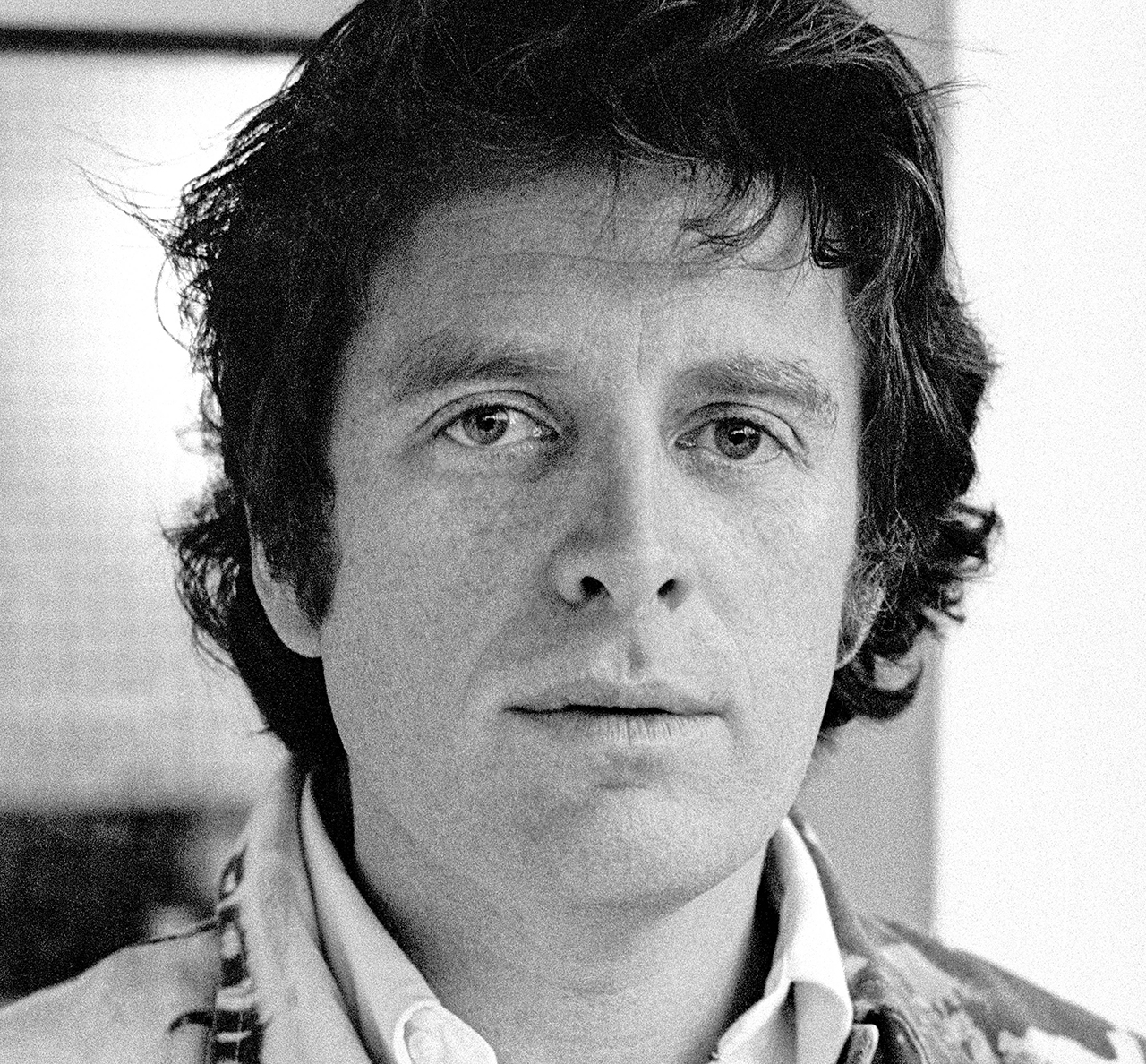
Decca/Deram/Gull
Ironically it was Decca, the most old-fashioned of the majors, who led the way. They’d started the Deram label in 1966 to showcase their brand new ‘Deramic Sound System’ (aka stereo) to discerning hi-fi buffs. They thought they’d get the Moody Blues to record a version of Dvorak’s New World Symphony with the London Festival Orchestra but the Moody Blues had ideas of their own.
The result was Days Of Future Passed, which attracted a much bigger audience, thanks largely to its showcase single, Nights In White Satin. Deram also released Procol Harum’s Whiter Shade Of Pale, which was No.1 for six weeks in the summer of 1967.
Buoyed by this success, Decca began putting their underground acts on Deram – Ten Years After, Cat Stevens (although he was pretty poppy when he loved his dog back then), Keef Hartley Band, East Of Eden and some bloke called David Bowie, whose self-titled album and single The Laughing Gnome flopped miserably (the latter was a Top 5 hit six years later). They never moved their biggest act, the Rolling Stones, on to Deram however – perhaps because this would have meant renegotiating a contract that was heavily loaded in favour of the company.
Deram’s bright start encouraged Decca to launch the Deram Nova offshoot in 1969 but releases by Aardvark, Bulldog Breed, Black Cat Bones and Pacific Drift barely registered. The Moody Blues’ Threshold label was another offshoot, providing the first three albums from Wolverhampton rockers Trapeze featuring Deep Purple-destined Glenn Hughes on bass.
Deram also lost two of their big names – Ten Years After and Cat Stevens – but they persevered through the early 70s with Caravan, Camel and Curved Air, none of who achieved the kind of breakthrough that would have taken the label up to the next level. And there were inconsistencies: two of the most promising underground acts,
Savoy Brown and a young Thin Lizzy, were on the Decca label.
Suspicions that Deram was being allowed to wither hardened when Decca launched a new, supposedly hipper label, Gull, in 1974. It could have been a triumph. One of Gull’s first signings was Judas Priest, already creating a major stir on the Midlands’ club circuit with their edgy, angry metal rock. But somewhere between the recording and the release of their first album, Rocka Rolla, several of their most powerful live songs got chopped or edited. 1976’s Sad Wings Of Destiny was a far better indication of the power of Priest but the damage was done and the band left for major label CBS.
EMI/Harvest
EMI was far more clued up about what an underground label was supposed to be. They’d already shown an awareness of the changing musical climate by signing Pink Floyd and doing licensing deals for Tyrannosaurus Rex, Procol Harum (before Deram had a chance to release an album) and the Jeff Beck Group.
When they started the Harvest label in the summer of 1969, EMI also had a bunch of newly signed and recorded acts, such as the Pretty Things, Barclay James Harvest, Climax Blues Band and the Edgar Broughton Band, ready for the label. Plus there was Deep Purple who’d already released one album and had a hit with Hush. Everyone had high hopes for them if only they could get a settled line-up together.
Deep Purple’s second album, Book Of Taliesyn, was the brightest of the first batch of Harvest albums, but the others – singer songwriter Michael Chapman, the eclectic Panama Limited Jig Band, the experimental Third Ear Band and the anarchic Pete Brown’s Battered Ornaments among them – sent a clear message that the label would support all forms of ‘anti-pop’ music.
Pink Floyd and Syd Barrett were natural in-house recruits to Harvest but it was Deep Purple who lit the label’s blue-touch paper in the summer of 1970. After being indulged with their Concerto For Group & Orchestra it was with In Rock that they forged their identity in metal. Harvest then watched Fireball explode across Europe and America.
By the time Deep Purple set up their own Purple Records to release Machine Head in 1972, Pink Floyd had repaid Harvest’s patience with Atom Heart Mother and Meddle and were about to reward them with Dark Side Of The Moon, one of the biggest- selling records the planet has ever seen.
The underground was now well and truly overground – but Harvest never lost sight of their manifesto and continued to sponsor Kevin Ayers, Roy Harper, Soft Machine, Babe Ruth, Electric Light Orchestra and Unicorn. They came tantalisingly close with Be Bop Deluxe and their reputation was strong enough to gain a grudging respect from the emerging punks, who stood in apparent opposition to most of what Harvest had released when they signed the Saints and Wire, and their credibility survived into the 80s. It’s still around for any likely band that fits the label’s ideals.
Philips/Vertigo
Harvest’s arrival in 1969 was swiftly followed by Vertigo, a label that parent company Philips hoped would achieve a similar credibility. Vertigo’s attitude was somewhat earthier than Harvest – more ‘fuck art, let’s dance’ – but at the end of their first year they were celebrating a No.1 album with Black Sabbath’s Paranoid. They had also released albums by Juicy Lucy, Uriah Heep, Rod Stewart and Manfred Mann’s Chapter Three.
Vertigo’s identity was considerably enhanced by a unique swirling-spiral design on the label that transfixed your average stoned Sabs fan as he watched it revolve on his turntable at 33 1/3 revolutions per minute. It also may have hypnotised fans into buying other Vertigo releases by Fairfield Parlour, May Blitz, Cressida and Affinity, that some claimed were only listenable for as long as you were watching the squiggle go round. The only problem was that you could only play one side of the record and watch the squiggles; the other side contained the track-listing for both sides. There are probably some old hippies out there who never heard the second side of Paranoid.
Vertigo showed some artistic pretensions with jazz fusion bands Colosseum and Nucleus, although both erred on the heavy side of jazz. They could have also have cashed in with the Genesis-sounding Beggars Opera, the heavy rock Freedom (who admittedly changed direction in midstream) the critically acclaimed Patto or even the wilfully uncommercial Gentle Giant. They had little chance with the staggeringly unpopular Dr Z whose album is believed to have sold less than 100 copies.
The strangest act on the roster was the Greek whimsical psychedelic folk trio Aphrodite’s Child, who insisted on keeping their Greek folk roots in the mix. The British were bemused by them, although they were big in Europe, but they went on to provide two of the 70s’ more unlikely superstars: the pioneering electronic wizard Vangelis and the even larger but less pioneering singer Demis Roussos who was shipped back to the Philips label.
The arrival of Status Quo in 1972, followed by Thin Lizzy in 1974, kept faith with the hard rocking fraternity and although Vertigo never made any inroads into punk they picked up two of the more promising new wave rock bands: Dire Straits and Graham Parker & The Rumour. Like Harvest, Vertigo is still around for the right band.
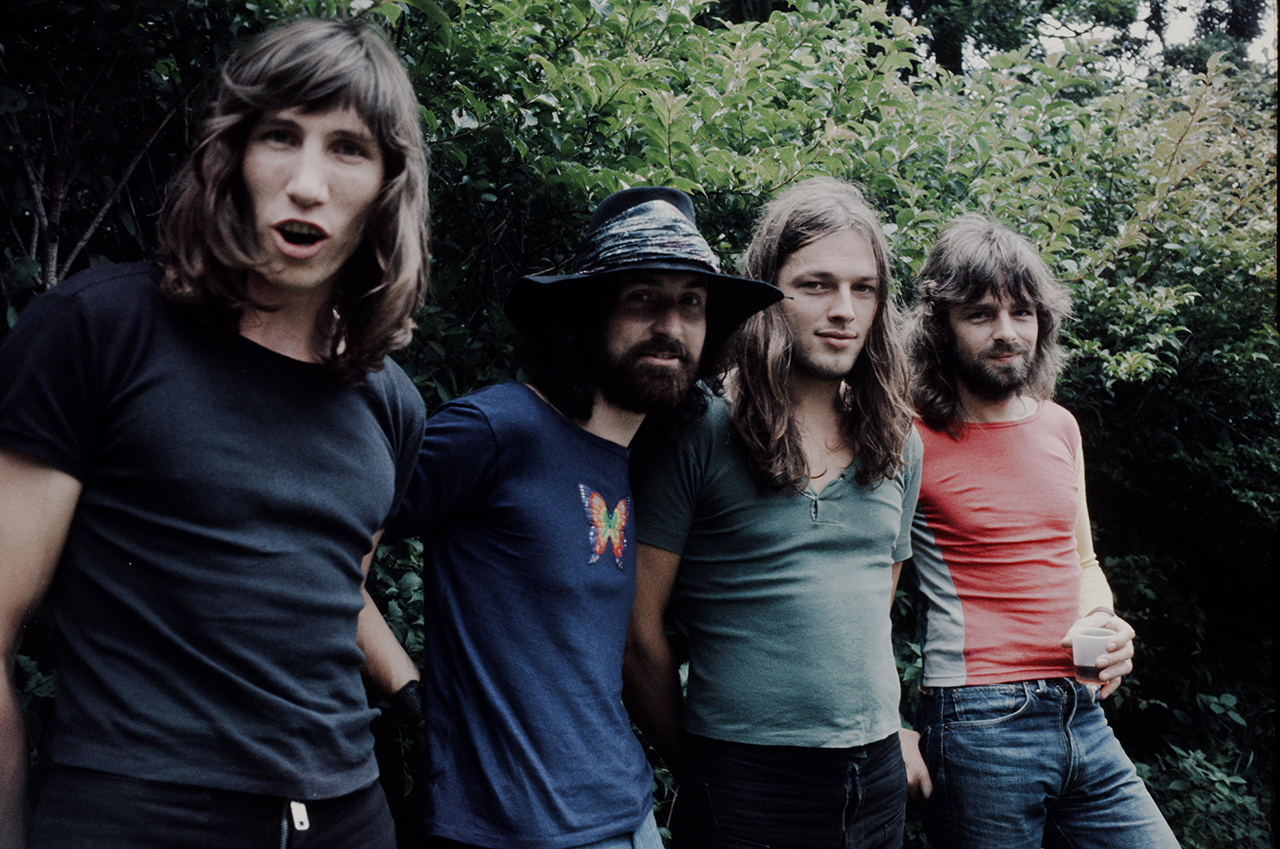
Pye/Dawn
Pye, the other major record company, got their own underground label together in late 1969 called Dawn. Pye’s problem, however, was that while they had done reasonably well out of the immediate post-Beatles era with the Searchers, the Kinks, Donovan and Sandie Shaw, they’d signed virtually nothing since 1967, while their rivals had signed literally hundreds of acts, and were woefully out of touch. They still thought that singles were more important than albums.
So the bosses must have been delighted when Dawn scored a No. 1 single inside the first year with Mungo Jerry’s In The Summertime, which topped the charts for seven weeks. They probably never checked the album sales for John Kongos, Man, Trader Horne, Mike Cooper or the Trio. By the time they did, it was probably too late. The news wasn’t good.
Without a hit album Dawn were doomed. Their big names were all past their commercial peak – Donovan, Atomic Rooster, David McWilliams – and even the most avid 70s buff is unlikely to have too many albums by Titus Groan, Paul Brett’s Sage, Demon Fuzz, Noir, Pluto, Stephen Jameson, Jonesy, Brian Friel or Bronx Cheer.
By the law of averages you’d have expected Dawn to sign someone decent, if only by accident. Prog rockers Fruup and hard rockers Stray worked hard but were perennial losers in the play- offs. However, if Dawn had paid a bit more attention to pub rockers Kilburn & The High Roads they might have spotted the potential in frontman Ian Dury. But they didn’t. The miracle is that Dawn lasted until 1976.
Charisma
What 70s indie labels needed was personality and charm, like Tony Stratton Smith who founded Charisma in 1969 and signed acts just because he liked them. Hailing from the class of gentleman that most people thought had died out before the war, Strat, as everyone called him, had been a sports journalist in the 50s – narrowly missing the plane that crashed and killed most of the Manchester United team in 1958, and facilitating the transfer of Jimmy Greaves from Chelsea to AC Milan.
In the 60s he moved into music publishing and then into management, handling the Nice and the Bonzo Dog Doo Dah Band. Exasperated by the incompetence of the record companies he was trying to deal with he decided to form his own. Charisma’s first release, Rare Bird’s Sympathy, was a hit single in Britain and much of Europe.
Strat’s policy for Charisma was simple – “anything good”. Among his earliest signings were Van Der Graaf Generator and Genesis, both unknown and both in need of exposure. So in 1971 he packed them off around the country on the Six Bob Tour.
Two years later, just as Lindisfarne had peaked, Genesis were beginning a more permanent breakthrough. Not that they were breaking even though – when Peter Gabriel left Genesis in 1975 the band were still £150,000 in debt to Charisma. But Strat, bless him, always put creativity ahead of profit. That’s why Gabriel stayed with Charisma when he went solo. As did Steve Hackett and Phil Collins’ jazz rock project Brand X. Not to mention all the splinters from Lindisfarne and Van Der Graaf Generator.
Strat’s eclectic taste encompassed Clifford T Ward, the National Youth Jazz Orchestra, Hawkwind, Bert Jansch, G T Moore & The Reggae Guitars and the Alan Parsons Project. He also had a penchant for Yes keyboard players, releasing solo albums from Rick Wakeman and Patrick Moraz. Quite how he made it all work and still sponsor horse races nobody really knew. Charisma wasn’t restricted to music either; the label released half-a-dozen albums by Monty Python’s Flying Circus, four albums by Sir John Betjeman and reminiscences by cricket commentator John Arlott and racing commentator Peter O’Sullivan. Not to mention Vivian Stanshall’s Sir Henry At Rawlinson’s End.
Strat was seldom sober, though rarely drunk, and he gave and received loyalty in spades. When he’d finally had enough he sold the company to Virgin in 1985 and died two years later. In a perfect world all record companies would be run by Tony Stratton Smith.
Dandelion Records
Speaking of charisma and personality we should not forget John Peel’s Dandelion Records, formed in 1969 in response to the number of demos he was getting from bands who couldn’t get record deals. Dandelion was set up as a non-profit making venture and made no profit throughout its three-year existence, releasing 27 albums and one sampler, which rather pointlessly came out just as the whole operation was closing down.
Peel’s fiercely uncommercial tastes are now the stuff of legend and Dandelion’s roster featured performance art anarchists Principal Edwards Magic Theatre, vintage rocker Gene Vincent and the frankly dire Stackwaddy. However several acts – Clifford T Ward, Medicine Head, Kevin Coyne – did progress to other labels afterwards.
With no promotion budget and three different distributors in as many years, Dandelion were always going to struggle. And they were not really geared for success; when Medicine Head came dangerously close to a Top 20 single with Pictures In The Sky, Peel reportedly lost interest.
If Medicine Head’s 1972 album, Dark Side Of The Moon, had made any impact whatsoever then Pink Floyd’s history would read very differently. And if Peel had signed Roxy Music instead of turning them down who knows what might have happened?
United Artists
A more enlightened form of subversion took place at United Artists. The American record company opened up a UK division in 1969 that was effectively hijacked by the underground for the first half of the 70s. A&R manager Andrew Lauder was the opposite of Tony Stratton Smith in character but they had the same musical outlook. He was label manager at another American label, Liberty, with a handful of British acts including Bonzo Dog Doo Dah Band and the Groundhogs, when it was taken over by United Artists. Lauder was set the task of building up the UK label’s profile.
The budget included hiring a San Franciscan astrologer to design everyone’s star sign and fitting high-powered extractor fans to remove the dope smoke from the office. Into this fragrant atmosphere came pioneering space cadets Hawkwind, West Coast rockers (Welsh division) Man, the musically dextrous Cochise, the musically hopeless Haphash & The Coloured Coat and innovative proto-pub rockers Brinsley Schwarz.
There was a loose musical identity to the label that hardened after several bands were sent out on the All Good Clean Fun tour and started exchanging band members. It began to resemble a Cheech & Chong movie script as bands got out of it to get into it, and then got so far into it they couldn’t get out of it (man). Sometimes the only thing that kept the songs down to 20 minutes was that you couldn’t fit any more on one side of vinyl.
Hawkwind and Man became underground cult heroes but, with the notable exception of Hawkwind’s chart smash Silver Machine in 1972, United Artists never looked like becoming mainstream contenders. However, the label was comfortably self-sufficient and Andrew Lauder still had his eye on the musical ball, signing German electronic pioneers Can. He also spotted the laid-back scene becoming leaner and tougher in the mid-70s and signed Dr Feelgood and the Stranglers, setting up United Artists for the upcoming punk revolution.
Such nuances were lost on the American parent company, however, where a new bunch of bean counters noticed only that there were fewer beans. Lauder got out and set up Radar Records, ushering in the new wave with the likes of Elvis Costello and Nick Lowe. But before he left he recorded an album with sacked Hawkwind bass player Lemmy and the new band he’d formed called Motörhead, with Larry Wallis on guitar and Lucas Fox on drums.
The album lay buried until 1979 when Overkill was pummelling the nation’s youth and the tapes were exhumed and released as On Parole. Some people think that album is even more Motörhead than Motörhead.
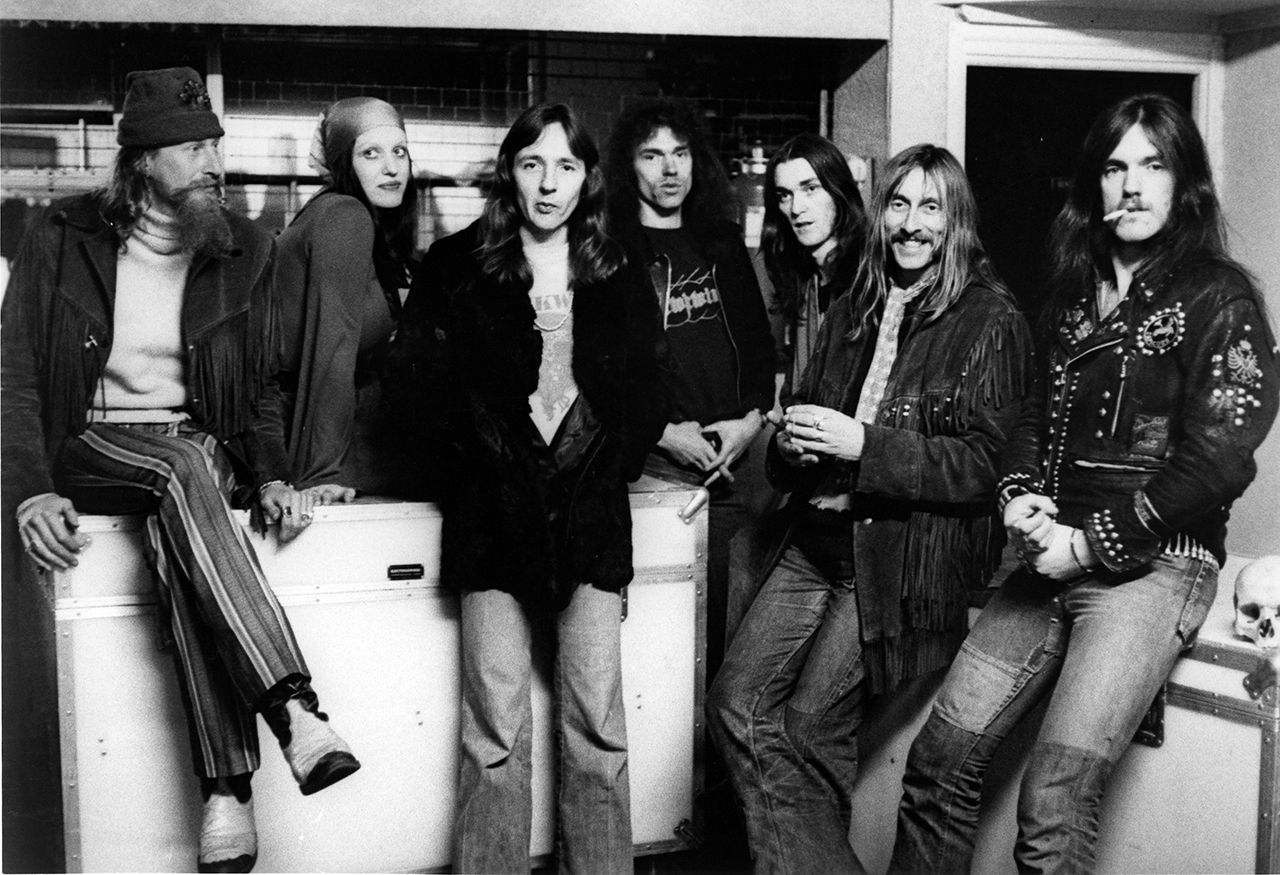
The new alternative: the best of the rest
The new alternative labels didn’t have to be underground, they could be pop. Mickie Most, a producer who’d had dozens of hits in the 60s with the Animals, Jeff Beck, Hermans Hermits, the Nashville Teens and Donovan, created one of the strongest 70s labels with RAK Records. One of Most’s earliest signings to RAK was Hot Chocolate and he then proceeded to put the pop into glam rock with Sweet, Suzi Quatro and Mud. And who can forget Smokie, Kim Wilde or Racey? Quite what Chris Spedding was doing in among that lot was anyone’s guess.
As the new labels flourished, it wasn’t long before they began spawning new labels of their own. When Jethro Tull managers Chris Wright and Terry Ellis signed their deal with Island Records in 1968 the contract stipulated that once they’d notched up a certain number of hits they’d be awarded their own label. They exceeded the quota within a year and established Chrysalis Records. Along with Tull and Blodwyn Pig/Mick Abrahams, they also had Ten Years After, then at the peak of their popularity.
Tull reached their prime soon afterwards and Chrysalis spent much of the 70s reaping the benefit from various pit stops along the trail from folk rock to heavy rock – from Steeleye Span to the Michael Schenker Group via Frankie Miller, Procol Harum, Robin Trower and UFO. They were also one of the first of the new labels to open an office in the US and sign acts such as Pat Benatar and Blondie directly to the label. Back home they were also smart enough to spot the Midlands-based 2-Tone movement in the late seventies, and wasted little time in snapping up the indie label on a distribution deal.
Bronze Records was set up by manager Gerry Bron in 1971 when he decided that his acts – Uriah Heep, Colosseum and Juicy Lucy – that he’d licensed to Vertigo were getting lost in the release schedule. So he decided to do it himself. Bronze didn’t have much more than Bron’s acts to work on and although Colosseum’s live album made the Top 20, Uriah Heep’s Look At Yourself was still a formative album and Juicy Lucy were changing members faster than they were selling records.
Fortunately, Heep’s next album, Demons And Wizards, was a breakthrough for the band and the label. Their next two albums bankrolled the label, and Gerry Bron completed his revenge on Vertigo by luring Manfred Mann’s newly formed Earth Band away from them. And at the start of 1976, Bronze had an unexpected hit when the Afro-rock rhythms of Osibisa’s Sunshine Day danced into the Top 20.
Even more unexpected was the arrival of Motörhead in 1978. The band had a tour lined up but no record label, and Bron put out their Louie Louie single as a favour to the promoter. Despite being ignored by the label, Louie Louie still managed to get into the Top 75. Bronze promptly signed Motörhead and enjoyed increasing chart success with Overkill, Bomber and Ace Of Spades, culminating in the band and label’s only No.1 album with No Sleep Til Hammersmith – which Lemmy ironically had tried to prevent being released.
Bronze kept its roster tight and got over a third of its album releases during the 70s into the charts, an impressive statistic when 20 per cent was considered satisfactory. But the real bonus for the label came in Europe where both Heep and the Earth Band eclipsed their UK sales.
Virgin Records were latecomers, put together by Simon Draper at the back of Richard Branson’s mail order office in 1973. They launched with four simultaneous album releases. Gong, Steve York and Faust all flopped but Mike Oldfield’s Tubular Bells started to sell and never stopped. Oldfield became Virgin’s cash cow and was milked remorselessly as a succession of silly hats worn by Henry Cow, Hatfield & The North, Kevin Ayers, Kevin Coyne, Carol Grimes, Steve Hillage, Ivor Cutler, Supercharge and Yellow Dog (who released the world’s first luminous single) all failed to contribute to Virgin’s coffers.
Eventually Richard Branson saved the day when he picked up the Sex Pistols who’d been hastily dumped by EMI and A&M. The mad hatter acts were consigned to the bin as Virgin embraced punk, from XTC to X-Ray Spex. And then came the 80s – Culture Club, Phil Collins, Genesis, Simple Minds. The last thing Richard Branson did before selling out to EMI for £500 million in 1992 was to sign the Rolling Stones.
The Stones had set up their own Rolling Stones Records back in 1970 after getting out of their Decca contract, but it proved to be something of a vanity label and Peter Tosh was the only other act they signed, although Bill Wyman did manage to sneak a couple of solo albums out.
Similarly, most people thought Led Zeppelin’s Swansong label was another vanity project when it started in 1974 until Bad Company defiantly proved everyone wrong. However, other albums by the Pretty Things, Detective and Maggie Bell all failed to live up to their expectations.
By the late 70s some of the labels that had been created a decade earlier were becoming as bloated and complacent as the labels they’d originally been set up to replace. They had become the establishment and punk was about to give the record label saga a whole new twist – which is another story.
